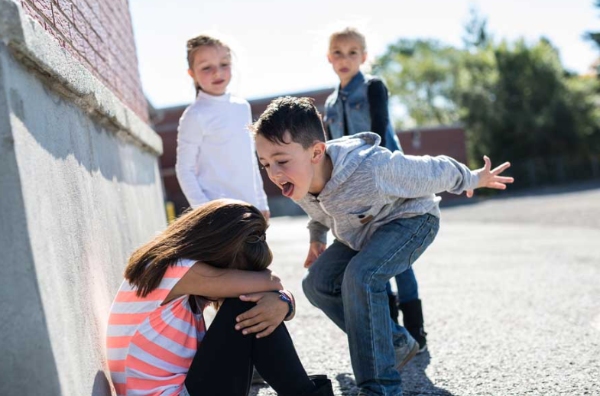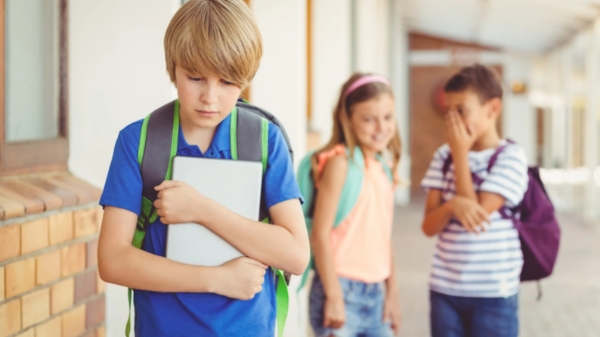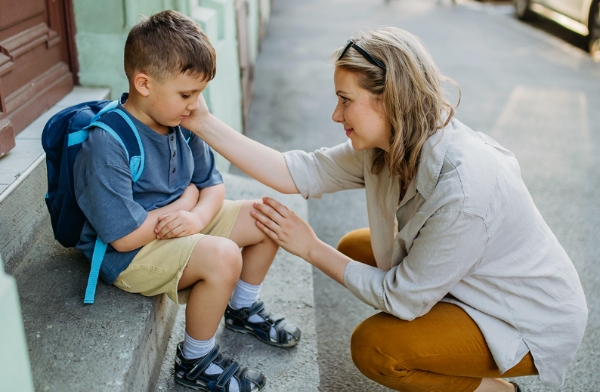Can you imagine that a report by the National Center for Education Statistics in 2019 shows that close to 20% of students experience being bullied in a single school year? But why do kids bully?
Bullying can result in long-term social implications to both the bully and the victim, and therefore, knowing the reasons why kids bully is the first step towards preventing it.
In this article, we shall discuss features that may signify a child is being bullied, the effects, and, more importantly, measures parents can take to prevent or deal with bullying.
Types of bullying
Bullying is not a nice experience, and the sad thing is that it can occur in many different ways. Here’s a breakdown of some of the most common types:
- Physical bullying
It is the most easily recognizable type. It consists of using force against a person to cause pain, such as punching, pushing, slapping, or throwing an object or depriving another person of something that belongs to him or her.
- Verbal bullying
This involves the use of words to cause somebody pain. It can be name-calling, insulting, threatening, teasing, using racial or homosexual slurs, and spreading rumors about the targeted student.
- Social bullying
This kind of bullying is where someone is left out in a group or an activity. Someone might be targeted because bullies want that person to be disliked, ignored during games and parties, or rejected by everyone.
- Cyberbullying
This involves using technological platforms to harass or offend a person. This can include sending rude texts or emails, sharing degrading photos or videos, or stalking an individual through fake accounts.
Are bullies naturally aggressive?



Bullies are not aggressive people by birth. Even though some of them may have more aggressive features, bullying is not just a simple occurrence but is a result of several factors.
Most children who bully others are likely to be under pressure themselves or are facing some personal, social, or environmental adversities.
It becomes important to understand this complexity, especially as we discuss some of the causes of children bullying others.
Acknowledging the fact that bullying is not just an inevitable manifestation of aggression allows for more preventative and curative approaches to bullying.
Reasons why kids bully others
The motives behind kids’ bullying can come as a shock. Sometimes, it’s not even about being nasty or vicious. Here’s why some kids engage in bully:
- Power, attention, and control: Bullying can be attributed to factors such as domination or power assertion and or the need for attention. To them, the feeling of power and control can really be satisfying and overwhelming.
- Low self-esteem: Bullying may be caused by such factors as fear, low self-esteem, and many others. In insulting others, they have the opportunity to experience satisfaction and think that they are superior to someone.
- Peer pressure and jealousy: Some of the children develop tendencies to be bullies so that they can be accepted in their group. Children may also be motivated by jealousy of another child in the crowd for having better things.
- Family atmosphere and social influences: Those who are exposed to violence at home are likely to become bullies. Similarly, an environment that accepts or even fosters bullying breeds bullies.
- Coping mechanism: It is not uncommon to find that some of the kids who bully are also experiencing some form of stress or trauma. It may also be the wrong way of dealing with mixed emotions in a relationship.
- Misunderstanding of social cues: Many of them are at an age where they are incapable of understanding the various scenarios that may occur and often end up being bullies. For instance, the mistaken belief that only engaging in peers’ bullying behavior implies true friendship.
- Desire for popularity: To them, it could be seen as ‘cool’ or some certain form of acceptable behavior done just to boss others around.
The long-term negative effects of bullying
Bullying is not only expressed physically but also emotionally and psychologically as well. The effects of bullying might be very close and far-reaching in the life of kids, whether as a victim or the bully, hence why parents should not take it lightly.



For victims:
- Mental health issues: Some of the potential effects of victimization include poor self-esteem, social isolation, and reluctance or difficulty to trust.
- Academic performance: Bullying affects the children’s concentration and commitment to school, and thus, they are likely to drop out or perform dismally.
- Social development: It also leads to the fact that victims have low interpersonal relationship functioning skills because they are afraid that they will be rejected or harassed even more.
- Self-esteem: It is noted that bullying results in a continuous negative cycle, which does not allow the child to build positive self-esteem.
For bullies:
- Relationship problems: A bully may have a poor ability to establish healthy relationships with others as a result of behaving aggressively.
- Risk of substance abuse: Bullies are more likely to use substances such as drugs and alcohol to deal with issues that make them become bullies.
- Legal trouble: Such behavioral manifestation in students may result in criminal actions in the future.
Signs your child might be bullied
Sadly, most bullies work behind the scenes, and it’s hard for children to report the cases to the authorities. Here are some warning signs that might indicate your child is being bullied:
Behavioral changes:
- Avoiding people they were close to or social events that they once found enjoyable.
- Increased anxiety or fearfulness.
- The emergence of new symptoms, withdrawal, constant crying, or irritability.
- Decreased focus in school or a decline in academic performance.
- Misrepresenting oneself as sick to miss school or certain events/situations.
Physical signs:
- Injuries, cuts, bruises, or damaged possessions with no apparent cause.
- Nosebleeds, coughing, headache or stomachaches, and other complaints too often.
- Difficulty sleeping or nightmares.
- Loss of appetite, or the desire to eat more than ever before.
Social signs:
- Damage to personal items like books, electronics, or jewelry.
- Arriving hungry at home because they skipped lunch at school.
- Choosing a longer and different route of getting home from school.
- Being secretive about what occurs at school or on the internet.
Emotional signs:
- Low self-esteem or thinking negatively about something or perhaps about oneself.
- Feeling helpless or hopeless.
- Difficulty concentrating or focusing.
- Experiencing enhanced levels of frustration or anger.
It is important for parents to understand that if they see such signs, it does not necessarily mean bullying must occur, but the signs should not be ignored.
What parents can do to help deal with bullies?



Parenthood involves being a safeguard to your child, and this includes shielding your child from the vice of bullying.
Here are some strategies to address bullying, whether your child is being targeted or exhibiting bullying behavior:
If your child is being bullied:
- Open communication: Make the environment conducive for your child to share all that is happening to him or her. Tell them that ‘it’s okay to feel like that,’ and try not to dismiss their thoughts or emotions.
- Work together: Involve your child in the formulation of a strategy for handling the bullying issue. You should get help from a teacher, counselor, or school administrator to assist with this process.
- Empowerment: Boost your child’s confidence and practice manners and techniques to confront bullies safely.
- Documentation: Document any case of bullying and ensure that it is recorded in detail, including the date, time, and description of the event, if any. This could be beneficial when filing a report on bullying.
- Consider professional help: If the bullying is quite serious, or your child is having trouble dealing with it, a therapist should be sought out.
If your child is bullying others:
- Address the behavior immediately: It is important not to make excuses for your child. In this case, explain why bullying is wrong and take this issue seriously.
- Help them understand the impact: Explain how their behavior negatively impacts or is detrimental to others. Encourage empathy and understanding.
- Address underlying issues: There might be some rationale behind his or her actions, for instance, low self-esteem and peer pressure. Support them in resolving these challenges.
- Positive reinforcement: Take a constructive approach to discipline that emphasizes positive reinforcement and empathy.
- Consider family counseling: A therapist’s involvement can help find the cause of the issue and restore a healthy way of conflict-solving.
Preventing bullying
- Anti-bullying values: Teach your child to be empathetic, respect others, and be kind-hearted. Model these behaviors yourself.
- Bystander intervention: Educate your child on how to act as a witness when confronted with difficult situations. This could range from defending someone being bullied to reporting the act and/or the bully.
- Cyberbullying awareness: Explain to your kid about cyberbullying and the right ways to conduct oneself on the internet. Parental controls should be considered as a tool for regulating the child’s Internet usage.
- Monitoring with a parental control app: Close attention to your child’s social interactions and friends’ cycle on his/her phone may reveal the truth, whether their child is involved as a bully or being bullied.
Parental monitoring tool for extra protection



The FlashGet Kids app offers significant monitoring features to prevent and stop bullying online or offline:
- Live monitoring: It features a remote camera and one-way audio to enable you to see and listen to your kids’ surroundings. Once you spot any danger signs, record and take prompt action to protect your child.
- Location tracking: The best way to protect your child is to know their whereabouts.
- Snapshots: Get screenshots of your kid’s phone in real-time, which may capture details you never knew before.
- Screen mirroring: This feature shows your kid’s phone screen to your phone so you can seamlessly and silently engage in their phone activities.
- Sync notifications: You can receive real-time notifications from your kid’s phone, ensuring you are always informed about their online interactions.
These tools can inform parents and help them get involved if there is a case of bullying at school.
Final thoughts
Bullying is a multifaceted phenomenon, and parents, educators, and society as a whole must remain aware and prevent this phenomenon from taking place.
By knowing the causes behind kids’ aggressive behaviors, learning how to identify red flags of bully among kids, and accepting that it has far-reaching consequences, we can collectively prevent our loved ones from suffering this injustice.
Other useful tools like the parental control apps can also assist in the monitoring and eradicating of bullying incidences.
Please bear in mind that fighting bullying is not only about defending the victims. It is also about the positive development of every child.

